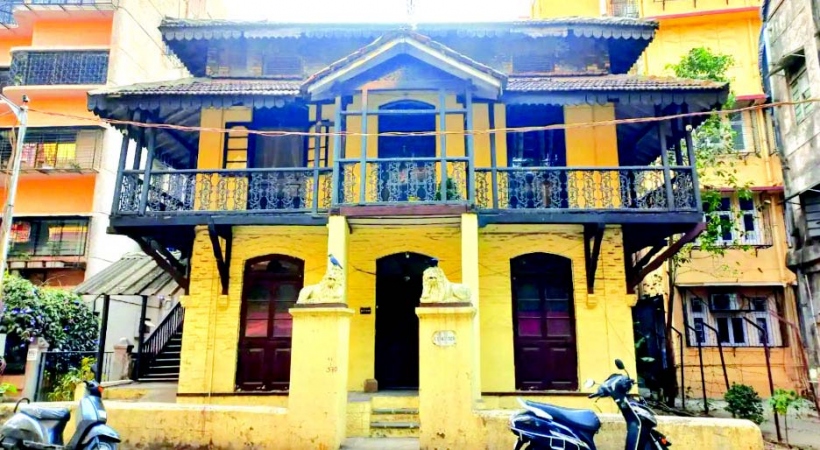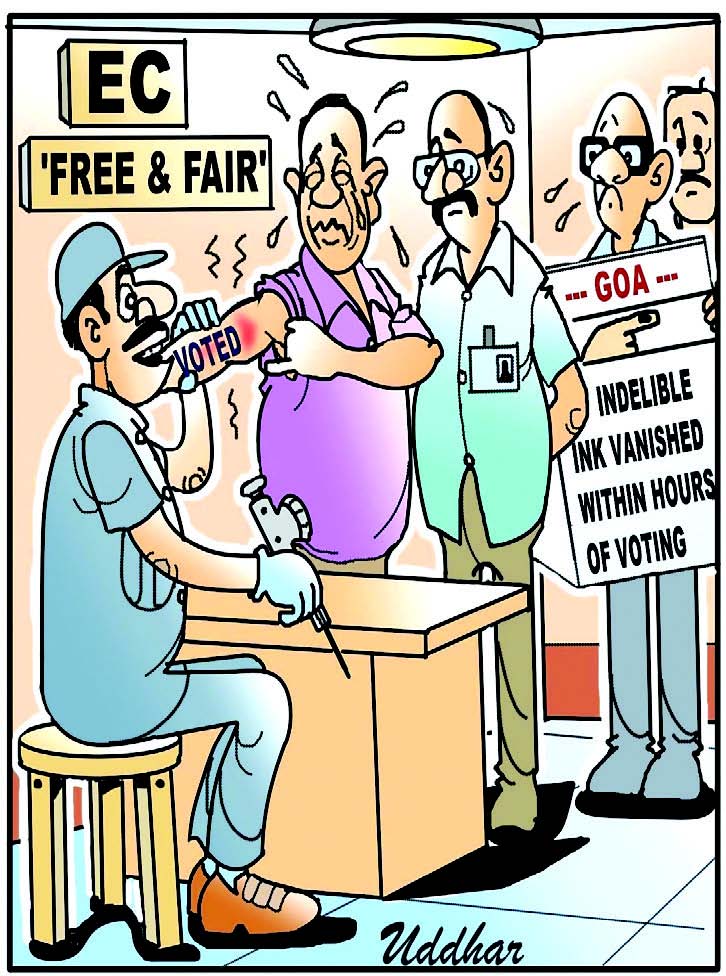
ANIL SINGH
If you fall asleep on the way to Mumbai and wake up in Matharpacady, you’ll believe that you’re back in Panjim. This heritage precinct in Mazgaon, South Mumbai, is a mini Fontainhas.
Of late though, it is losing character because of that urban malaise called redevelopment. Up against the formidable builder-politician nexus, its residents are taking a leaf out of Goa’s heritage movement which is led by its citizens.
They argue that just like Goan heritage houses are a crucible of its culture, the cottages in Mumbai’s ‘gaothans’, or villages that predate Mumbai’s establishment as a city, are a part of its history and heritage.
Besides, these precincts nurture a way of life that is under threat. East Indians and Goans have been living here for generations, developing shared values and deep community bonds that nourish the precinct and the ultimately the city.
Fleur D’Souza, former head of the Department of History at St Xavier's College, Mumbai, says Matharpacady is one of the last remaining precincts where one can see what life was in the 19th century Mumbai, if not earlier.
On November 3, residents of Matharpacady held a candlelight march in the urban village to protest against redevelopment that threatens to obliterate the charming settlement. Beginning with prayers at a local chapel, the march wound its way through lanes lined with quaint cottages.
Matharpacady poses a question for urban planners: Should there not be a nod to historically significant areas and cohesive communities in the redevelopment model?
One of Matharpacady’s famous East Indian residents was Joseph Baptista of the All India Trade Union Congress. An associate of Tilak, he’s credited with the slogan immortalised by the former: “Swaraj is my birth right and I shall have it.”
Today, only 300 residents and 55 houses are left in this ‘gaothan’ being nibbled by piecemeal redevelopment. So, you have concrete and glass towers standing out like sore thumbs amidst colourful and tiled cottages.
A study by architect Pankaj Joshi for the Mumbai Metropolitan Region Heritage Conservation Society found that expensive wooden verandas, trelliswork, and timber structural work in Matharpacady was replaced by masonry and concrete work, reducing its architectural merit.
For instance, Queen Victoria is engraved into the design of grills in houses built during her reign. People paid homage to the ruler by adding these little details, explains veteran journalist and heritage buff Rafique Baghdadi.
This writer remembers a quaint bungalow, Lion’s Den, showing the influence of Portuguese, British and vernacular architecture from a heritage tour conducted by Baghdadi for the Mumbai Press Club.
Like the other bungalows here, Lion’s Den is a Grade III heritage structure, which makes it easy prey for land sharks. Last year, the Brihanmumbai Municipal Corporation decided to allow the redevelopment of listed heritage Grade III structures and precincts without its approval.
A recent notification by the BMC threatens to bring Matharpacady under ‘cluster development’, which means that the entire precinct can be pulled down and replaced with skyscrapers, like the ones coming up all over Mazgaon, which was one of the seven islands of Mumbai.
The Heritage Committee has protested, calling for comprehensive guidelines but money talks loudest in the City of Gold.
Despite the protest, some residents are in two minds about redevelopment in the absence of any support from the government, says the Matharpacady Residents Welfare Association. To think that Bombay’s first Mayor (1948-49), Dr Mafaldo Ubaldo Mascarenhas, came from this village.
The question civic activists are now asking is: Can redevelopment be allowed to simply steamroll a heritage precinct out of existence?
Lawyer Godfrey Pimenta of Watchdog Foundation, fighting to preserve ‘gaothans’, laments that we are pulling down urban heritage when cities all over the world are doing everything to protect it.
Heta Pandit of the Goa Heritage Action Group feels citizens need to be educated about their past for them to be interested in conserving their heritage. Matharpacady is already on the heritage walks circuit though most of the tours are sketchy.
Journalist Fiona Fernandez whose book, ‘H for Heritage: Mumbai’, was released in April, says conservation needs local action as well as support from the civic body. “The art deco buildings of Marine Drive got UNESCO’s World Heritage tag after a sustained campaign of nine years,’’ she points out.
It remains to be seen if Matharpacady can get the same traction as the more popular Khotachiwadi, also in South Mumbai. It has had a restoration plan with the Khotachiwadi Heritage Trust leading the effort.
The project includes the installation of an archway to the precinct, demarcating boundaries, restoring cobblestone pathways, installing street furniture like lamp-posts and benches besides having a wall of fame for the precinct’s famous residents like painter Raja Ravi Varma, and a museum for history enthusiasts.
Maharashtra may not look at global cities but it can surely look at Goa and come up with a win-win solution for heritage precincts. After all, places such as Matharpacady are the embodiment of time standing still in fast-paced Mumbai.
(Anil Singh is an independent journalist based in Mumbai)
